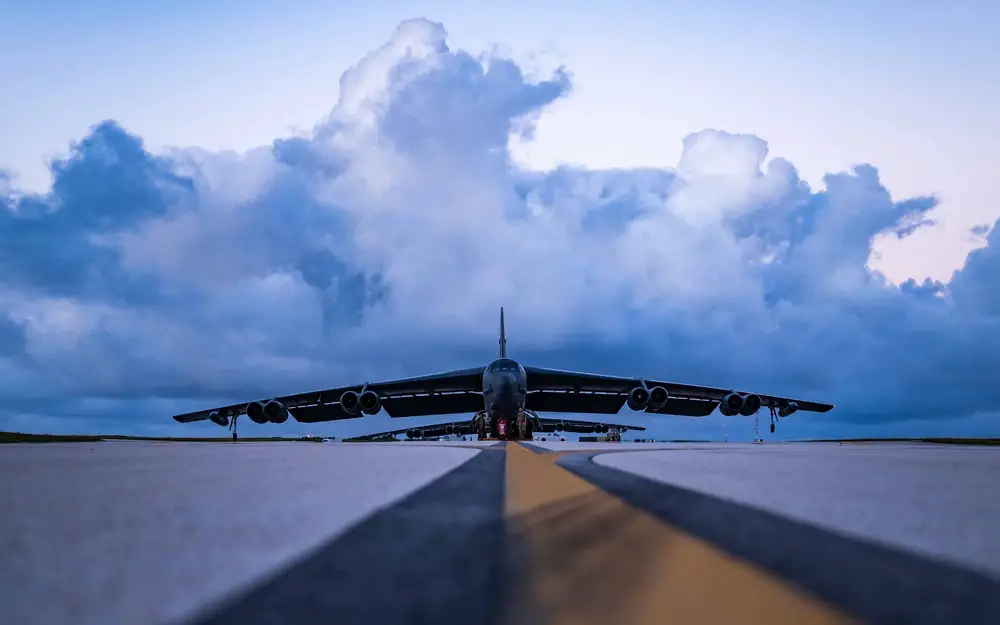Airmen from the 96th Bomb Squadron at Barksdale Air Force Base, Louisiana, have been operating out of Andersen Air Force Base, Guam, as part of a Bomber Task Force Mission for the past month. Four B-52H Stratofortress aircraft were deployed to the island, to accomplish strategic deterrence objectives in the region. Bomber Task Force missions affirm Air Force Global Strike Command’s commitment to ensuring peaceful commerce and diplomatic relations can continue for all Indo-Pacific nations. As the U.S. Air Force’s long range strategic bomber, the B-52 has an undisputed role in the U.S. National Defense Strategy.
“The strategic intent of the U.S. in the Indo-Pacific region is to assure allies and deter aggression. By integrating with our allies in the area and ensuring international airspace and waterways are respected, the B-52 helps the U.S. meet this strategic intent. Peace in the Indo-Pacific region is paramount to economic and diplomatic stability. Because the vast majority of a country’s supplies travel through international shipping lanes, keeping these lanes free, open, and clear of interference is critical,” said Lt. Col. Benjamin C. Kempen, 96th BS director of operations.

“The B-52 has been a reliable and lethal deterrent for the past 70 years and continues to provide deterrence on a daily basis. The B-52 will undergo a transformation in the near future that includes new engines, a new radar, as well as a transition to a four person crew. These advancements will keep the B-52 proactively lethal as we continue towards the strategic deterrence of tomorrow,” said Maj. Joshua Dawkins, 96th BS Bomber Task Force director of operations.
Along with providing that daily deterrence from Guam, B-52 aircrews practiced flying sorties similar to the missions they would be undertaking during a real conflict in the region. Already proven to be a steadfast airborne weapons-platform, the B-52 will soon be retrofitted with cutting-edge equipment. It’s not just the aircraft that is relied upon. Bomb squadron aircrews like the 96th BS train everyday to be mission capable and ready to answer the call. The Boeing B-52 Stratofortress is an American long-range, subsonic, jet-powered strategic bomber. The B-52 was designed and built by Boeing, which has continued to provide support and upgrades. It has been operated by the United States Air Force (USAF) since the 1950s. The bomber can carry up to 70,000 pounds (32,000 kg) of weapons,[2] and has a typical combat range of around 8,800 miles (14,200 km) without aerial refueling.













